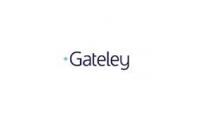Completing a first aid needs assessment entails making an estimate of the risk of a cardiac arrest occurring at a location and considering the potential consequences if it were to occur.
It is not a legal requirement to undertake such an assessment, but some organisations may require this to be done. The Resuscitation Council UK has produced guidance on carrying out such Assessments. See the following link:
https://www.resus.org.uk/defibrillators/do-i-need-an-aed/
The Resuscitation Council (UK) and British Heart Foundation have written a Guide to Automated External Defibrillators (AEDs) which gives full information about the use of AEDs in the community. This will answer many of your questions in more detail.
LOCATION AND SITE CONSTRAINTS
The proposed location of the CPAD needs to be:
- easily visible;
- easily and fully described by the Ambulance Service to anyone they instruct to fetch the Defibrillator(including to visitors to the area);
- easily accessible (including at an appropriate height (base of Cabinet approx 1 metre from ground level).
- either accessible to the anyone 24/7 or, if in a location which is not accessible at all times (eg locked at night), has a clear set of hours when the CPAD will be accessible. Factors such as street or other lighting at night should also be considered.
Site Considerations:
- Locating the Cabinet on the outside of a private building / private land is often easier than needing to involve the local authority/ies. An example would be on the Pub wall or a local shop. A private owner can normally give their permission with less bureaucracy. The premise owner will often also assist with any required electrical connections and may well absorb the electric running costs (less than £1 per month).
- Where an external Cabinet is to be attached to a wall, ensure that the owner of the premises and any lessee is in agreement.
- If outside, access to mains electrical power will be required for the Cabinet. This will either be into a 13 amp connection or into a 13 amp connection via a transformer dependent on the type of Cabinet chosen. Cabinet manufacturers strongly recommend installation by a qualified electrician, with an RCD utilised within the connection. Action also needs to be undertaken to ensure that the electrical supply to the Cabinet cannot inadvertently switched off (eg by someone flicking off the power switch or removing the plug to use the socket for alternative purposes).
- The permission of the organisation / individual from which the power is provided should obviously be obtained, along with (written) agreement concerning the payment for this electricity consumed (minimal - £5 - £10 per annum).
- Is the site well lit for access and use at night time – eg by street lighting or can an external light operated by an automatic movement sensor be fitted?
- If located in a Conservation Area, liaison with the Local Planning Dept may be required to ensure there are no planning restrictions. If the Cabinet will overhang the public highway (including pavement), the Council Highways Section must be consulted and permission given.
- A risk assessment should be undertaken (and documented) to ensure that the proposed Cabinet location does not form a potential hazard.
CHOICE OF AUTOMATED EXTERNAL DEFIBRILLATOR (AED)
WHO CAN BUY an AUTOMATED EXTERNAL DEFIBRILLATOR (AED)
- There are a number of Automated External Defibrillators available for sale in the United Kingdom. Use of a standard web search engine will easily identify those available.
- Anyone in the UK can purchase of an AED. It does not require a prescription (unlike, for example the United States). Manufacturers do, however, require traceability information in case of product recall / upgrade.
- All AEDs perform the same basic function. Some have a range of added functionality (for example in supporting the delivery of effective CPR or different ways of delivering a shock to a paediatric patient [approx. 1 to 8 years of age]).
AUTOMATIC OR SEMI AUTOMATIC
A decision needs to be made as to whether the AED should be 'Automatic' or 'Semi-Automatic'.
- An automatic AED, once activated, will progress through to delivering a shock, if required, without any further manual intervention. Audible prompts will warn those assisting the patient to 'stand clear' before the shock is delivered.
- Semi automatic AEDs follow the same processes, but have a manual button which must be pressed to deliver the shock (when required). Audible prompts will again guide those assisting through the process. This manual intervention gives an opportunity for the person pressing the button to deliver the shock to do a visual check to ensure no-one is touching the patient.
PAEDIATRIC PROVISION
A decision is required as to whether the AED should have a paediatric capability and, if so, how the switch between adult and paediatric is achieved.
- National guidance (from the Resuscitation Council UK) states that the incidence of shockable rhythms requiring defibrillation in the paediatric population is very low but can occur. The priority must always be for high quality CPR and getting expert help. However, an AED without paediatric provision can be deployed across all age groups if this is the only available machine. In addition, the paediatric advanced life support guidelines 2015 state that if using an AED on a child of less than eight years, a paediatric attenuated shock energy should be used if possible. Commonly the AED will then restrict the shock energy to around 50 J. In summary, therefore, in a child of less than 8 years of age, if only a generic AED is available, then it should be used. An AED with paediatric provision should be used if possible.
- Several AEDs are available which have a paediatric provision. A principal factor to be considered is how the paediatric provision is activated. Some have two sets of pads – adult and paediatric, with the operator, as necessary, disconnecting one set of pads and then connecting the appropriate set; another has a 'paediatric key' which is inserted into the AED to change it to paediatric mode. The AED will recognise which mode or set of pads are connected and adjust the shock level and audible prompts accordingly. Other AEDs use one set of universal pads and have a Paediatric switch to change the AED into paediatric mode.
- Many CPAD installations incorporate an AED without paediatric provision. The British Heart Foundation, in their latest CPAD initiative, have included as an option an AED with a paediatric switch.
A Community Public Access Defibrillator is made up of two principal elements: the AED and the Cabinet. It is quite possible to mix and match AEDs and Cabinets from different suppliers. Care must be taken, however, to ensure that the chosen AED will fit inside the chosen Cabinet. (Some AEDs will fit inside a smaller Cabinet without their Carrying Case, but will not fit if kept in the carrying case).
Community Public Access Defibrillators are also placed in a variety of locations such as disused telephone boxes. An organisation well versed in such locations is the Community Heartbeat Trust, which has a comprehensive web site.
Some Ambulance Services and Charities have special (financial) arrangements to encourage the installation of AEDs and PADs in particular.
In the Leicestershire area, East Midlands Service (EMAS) currently has their '£999' package – see below:
CHOICE OF CABINET
If the Cabinet is on the public highway liaise with the local authority.
Most External Cabinets need an electricity supply – for an internal thermostatically controlled to keep the Defibrillator at a working temperature during the cold winter months and also to provide power for an internal light and / or alarm.
The Joe Humphries Memorial Trust, to encourage Sports Clubs particularly to make their AED available 24/7 to the wider community, will assist with the provision and installation OF PAD Cabinets, normally up to £600 per installation. (This can, of course, be utilised in conjunction with other schemes such as the EMAS '£999' package above).
As with AEDs, there are a number of manufacturers / suppliers of Cabinets to house community accessible defibrillators – both for internal and external use.
Cabinets are manufactured in a range of materials: mild steel, stainless steel, aluminium, plastic. Each has benefits. All manufacturers (and suppliers) have web sites with full details on their product/s and costs.
CABINETS FOR EXTERNAL USE
For a CPAD which is open to the elements, it is important that it is fitted with an internal heater. This will be thermostatically controlled within the Cabinet. This heater is required to keep the AED at a temperature above freezing point (normally approx 5 degrees Celsius). This is required to both stop the temperature of the internal AED battery from falling below its optimal operating range and also ensuring the that AED Pads which are placed on the patient and which contain a water based gel, do not cool to an extent it degrades their performance.
A decision also needs to be made as to whether the Cabinet should be lockable or unlocked. The Resuscitation Council UK provides guidance.
This guidance is also shown at Appendix 1 to this document.
East Midlands Ambulance Service supports locked Cabinets where applicable provided that they have the code to inform persons requiring to retrieve the AED.
Leicestershire Police advise that the decision as to whether a Cabinet should be locked or not should be based on a Risk Assessment, covering such matters as the levels of local crime and vandalism, the Cabinet location, both in terms of its position in relation to the night time economy and its remoteness. If the installation is to be insured, this Risk Assessment may be of assistance in discussions with your insurer.
Many Cabinets incorporate an Observation window, making it possible to check that the AED is both in place and ready for operation without opening the Cabinet.
It will also be noted that Cabinets are now produced in a range of materials: mild steel, stainless steel, fibreglass, reinforced plastic.
Some manufacturers produce comparison data between their different types of Cabinet.
Companies which manufacture / supply Cabinets, including their web site details are numerous and can be found by googling Defibrillator Cabinets
CABINETS FOR INTERNAL USE
A range of Cabinets are available for internal use. These may not be weather proof nor include a Heater. Most are unlocked. An option to have an audible alarm sound when the Cabinet is opened may also be available.
Such internal Cabinets may include a glass panel (which aids a visual check of the AED)
AEDs and Cabinets available through purchasing arrangements
1. East Midlands Ambulance Service has organised a purchasing arrangement for a CPAD installation.

































































